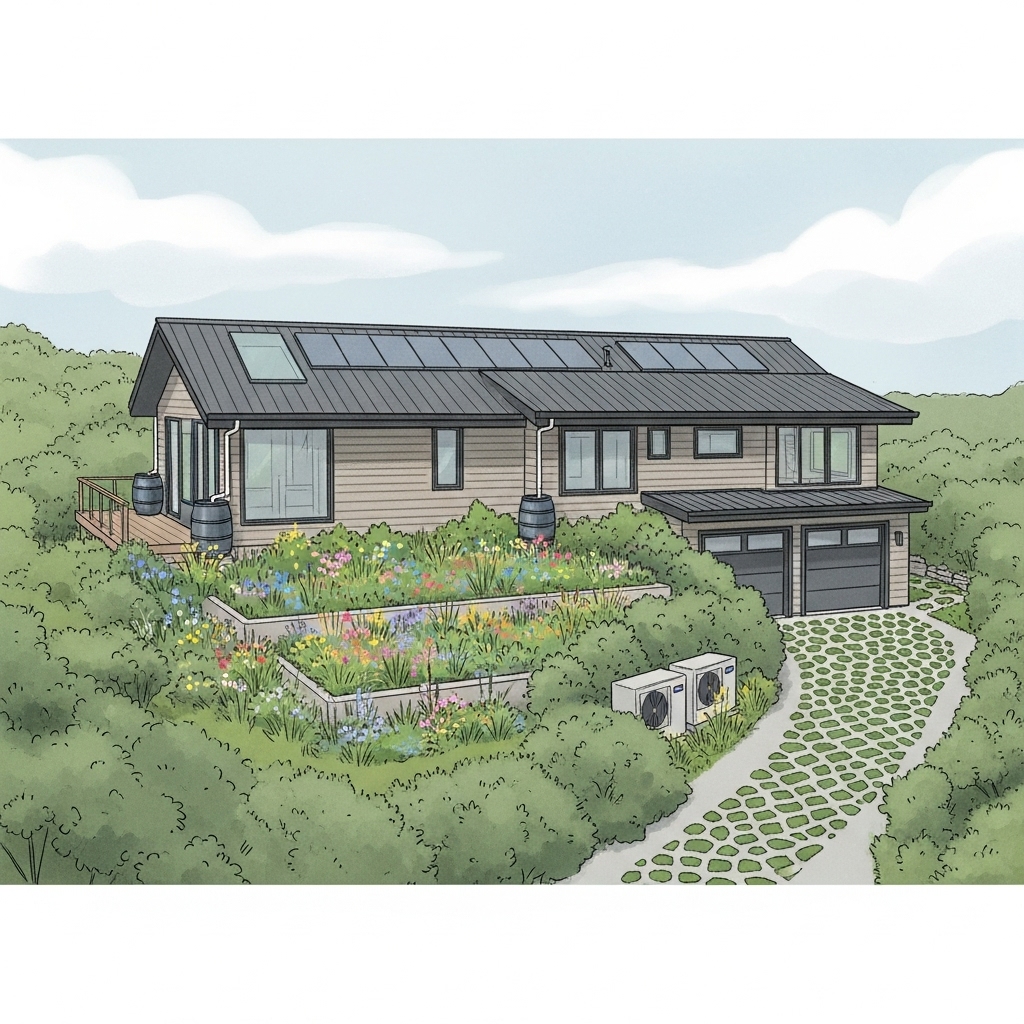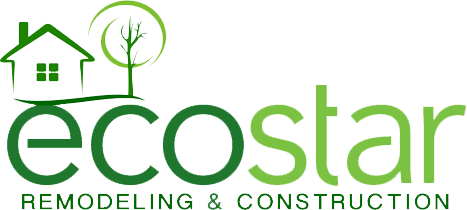
When you live between the canyons and the coast in Pacific Palisades, the environment isn’t an abstract idea—it’s the horizon you watch at breakfast and the breeze you hear in the evening. Building here carries a responsibility to protect what makes the place special. The encouraging truth is that sustainability and beauty are not at odds. With experienced home builders, reducing environmental impact becomes a natural part of creating a home that is comfortable, resilient, and perfectly attuned to its setting.
Environmental stewardship starts with the site. Thoughtful teams approach grading with restraint, respecting natural contours and minimizing cuts and fills that can destabilize slopes or send sediment into storm drains. When retaining structures are needed, they are designed to work with the terrain, incorporating drainage and planting that hold soil in place. During construction, erosion control keeps the site clean through rain events, protecting neighbors and the ocean beyond.
Water is precious in Southern California, and it shapes everything from landscape design to rooflines. Builders reduce impact by coordinating cisterns or rain barrels, routing downspouts to rain gardens where feasible, and selecting permeable paving that lets water return to the ground slowly. Irrigation systems are designed with high-efficiency components and smart controllers, and plant palettes favor drought-tolerant species that look at home in the coastal hills. The goal is a landscape that thrives with less, sustains local habitat, and keeps stormwater on site rather than rushing it to the street.
Energy performance is the backbone of a low-impact home. A high-performance envelope—continuous insulation, robust air sealing, and well-detailed windows and doors—reduces energy demand before a single panel goes on the roof. Builders who embrace this approach treat air sealing as craftsmanship. They align weather barriers across transitions, close gaps at top plates and penetrations, and coordinate with electricians and plumbers so the envelope remains intact. The payoff is year-round comfort and significantly reduced energy use without relying on mechanical systems to overcome a leaky shell.
When it comes to mechanical systems, electrification paired with efficiency is the modern path. Heat pump heating and cooling offers comfort without combustion, and heat pump water heaters deliver hot water with surprisingly little energy. Balanced ventilation with energy recovery keeps indoor air fresh while preserving conditioned temperatures. In the Palisades, where mild days outnumber extremes, these systems shine, providing quiet, steady comfort that feels more natural than the blast of older equipment.
Solar energy rounds out the strategy. Rooftops that are designed for panels from the start—considering orientation, shade, and mounting—perform better and look cleaner. Battery storage adds resilience, smoothing the grid’s peaks and offering backup during outages. Builders integrate these systems aesthetically, coordinating conduits, inverters, and meters so the technology supports the architecture rather than cluttering it.
Material choices are another powerful lever. Selecting products with recycled content, low embodied carbon, or certified sourcing reduces impact upstream. Concrete mixes that incorporate supplementary cementitious materials can lower carbon intensity while meeting structural needs. Reclaimed or FSC-certified wood supports forests and gives interiors warmth with a story. Inside the home, low-VOC paints, sealants, and adhesives protect indoor air quality, which matters in a climate where everyone loves to throw open the doors to the breeze.
Durability may be the most sustainable choice of all, especially near the coast. Builders focused on longevity specify exterior systems that last: robust claddings, stainless or coated fasteners, and weatherproofing details that anticipate wind-driven rain. Durable homes need fewer replacements and less maintenance, which saves resources for decades. In the Palisades, where salt and sun are constant, that strategy is as green as it is practical.
Waste reduction during construction is another area where disciplined builders make a difference. Source-separated recycling, careful material takeoffs, and modular framing or panelization can reduce offcuts and packaging. Salvaging usable materials during demolition—doors, fixtures, even structural lumber in some cases—keeps items out of landfills and can live on as character pieces in the finished home. A tidy jobsite isn’t just a point of pride; it’s a sign that resources are being respected.
Light is part of the environmental conversation too. Good daylighting reduces the need for artificial lighting during the day and transforms interiors, but it must be handled carefully to avoid heat gain or glare. Builders collaborate with designers to shape apertures, incorporate overhangs, and use high-performance glazing so light feels soft and generous. At night, exterior lighting is kept warm and low, focused where needed to maintain safety without sending glare into neighboring properties or the night sky.
Acoustics, often overlooked in sustainability discussions, contribute to well-being. Quiet mechanical systems, insulated interior walls for privacy, and exterior assemblies tuned to the soundscape make a home more livable. When a house feels calm, doors and windows stay closed as intended, which preserves energy performance and comfort with less effort.
Transportation is another piece of the puzzle. Builders increasingly include EV charging, bike storage, and thoughtful entry sequences that encourage walking and cycling. These features integrate seamlessly with contemporary life and support lower-impact daily routines. In neighborhoods where errands are a short drive away, convenient charging at home nudges that drive toward electric miles.
The construction process itself leaves a footprint on the neighborhood. Experienced teams mitigate that impact with logistics that minimize truck trips, respect parking, and maintain clean streets. They schedule noisy work responsibly, coordinate deliveries to avoid school drop-off hours, and maintain fencing and signage that keep the site safe and neighborly. These practices protect community relationships while keeping the project moving.
Coastal protection is more than an abstract regulation; it’s a practice. Builders ensure that sediment and pollutants do not enter storm systems, that vegetation near slopes is protected, and that temporary erosion control is installed before the first shovel hits the ground. After storms, they inspect and refresh those measures so the site remains stable and compliant. It’s a rhythm that respects both the land and the rules designed to protect it.
Mid-project, the most meaningful sustainability wins come from coordination. When framing, envelope, and mechanical teams operate in sync, penetrations are minimized, insulation remains continuous, and the building performs as designed. This is where experienced home builders make sustainability feel seamless—there’s no drama, just a series of smart decisions that add up to a better home.
Interiors can be healthy and low-impact without feeling precious. Durable floors that can be refinished rather than replaced, cabinets built from formaldehyde-free materials, and fabrics that wear well in salty air all contribute to longevity. Builders guide clients toward options that stand up to sandy feet and open doors while maintaining indoor air quality—because the most sustainable room is the one you love enough to keep for a long time.
Landscapes bridge the home to the hills and ocean. Native and climate-adapted plants support birds and pollinators, while deep mulches and efficient irrigation reduce watering needs. Permeable paths and driveways slow stormwater, and subtle grading directs runoff to planted areas rather than the street. Builders coordinate these elements early, ensuring that sleeves, drains, and lighting are in place before hardscape is finished.
Fire resilience is fully compatible with sustainability. Non-combustible siding, tempered glazing, and well-detailed eaves protect the home, while plant choices and spacing reduce risk without sacrificing beauty. The result is a landscape and building envelope that work together, ready for dry seasons and Santa Ana winds without losing their welcoming character.
Education is part of every successful sustainability story. Builders who care about impact take time to explain maintenance, system controls, and small habits that make a home operate at its best. They demonstrate how to clean filters, set ventilation schedules, and use shading to keep interiors comfortable. When owners understand how the house breathes and responds to the weather, the technology fades into the background and the home simply feels good.
Over the long term, adaptability keeps environmental impact low. Flexible layouts that can accommodate changing family needs reduce the urge to remodel frequently. Thoughtful infrastructure—extra conduits, accessible chases, and serviceable equipment locations—makes future upgrades easy without tearing into finishes. Builders design with tomorrow in mind, which is its own kind of conservation.
How do builders reduce grading impacts on hillside lots?
By aligning the building with natural contours, using retaining structures only where necessary, and coordinating drainage and planting that stabilize soils. Careful staging and erosion control keep sediment on site during storms, protecting neighbors and the coastal watershed.
What are the most effective energy upgrades for coastal homes?
A continuous, well-sealed envelope paired with high-performance windows sets the stage. Add heat pump systems and balanced ventilation, and you’ll see big comfort gains with lower energy use. Solar and storage extend the benefits and add resilience.
Can durable materials also be sustainable?
Absolutely. Durability means fewer replacements over time, which saves resources. When paired with low-emission finishes and responsible sourcing—like FSC-certified wood or low-carbon concrete—you get longevity and lower impact together.
How do builders manage construction waste responsibly?
They plan precise material orders, separate recyclables, and salvage usable components during demolition. Clean jobsites with thoughtful staging reduce damage and offcuts, while donations or reuse give materials a second life.
What makes landscaping sustainable in the Palisades?
Planting palettes that favor native and climate-adapted species, efficient irrigation, permeable hardscape, and grading that encourages stormwater to soak in rather than run off. These choices support habitat, save water, and protect the coastline.
Is wildfire resilience compatible with open, modern design?
Yes. With tempered glazing, ember-resistant vents, non-combustible claddings, and landscape strategies that maintain defensible space, homes can remain open to views and breezes without sacrificing safety. The protective measures are integrated and often invisible in daily life.
Building with care for the environment is also building for your own comfort and peace of mind. If you’re ready to explore a design that treads lightly while living beautifully in Pacific Palisades, connect with experienced home builders. Together, we can craft a home that feels right for the coast, the community, and the world beyond.

